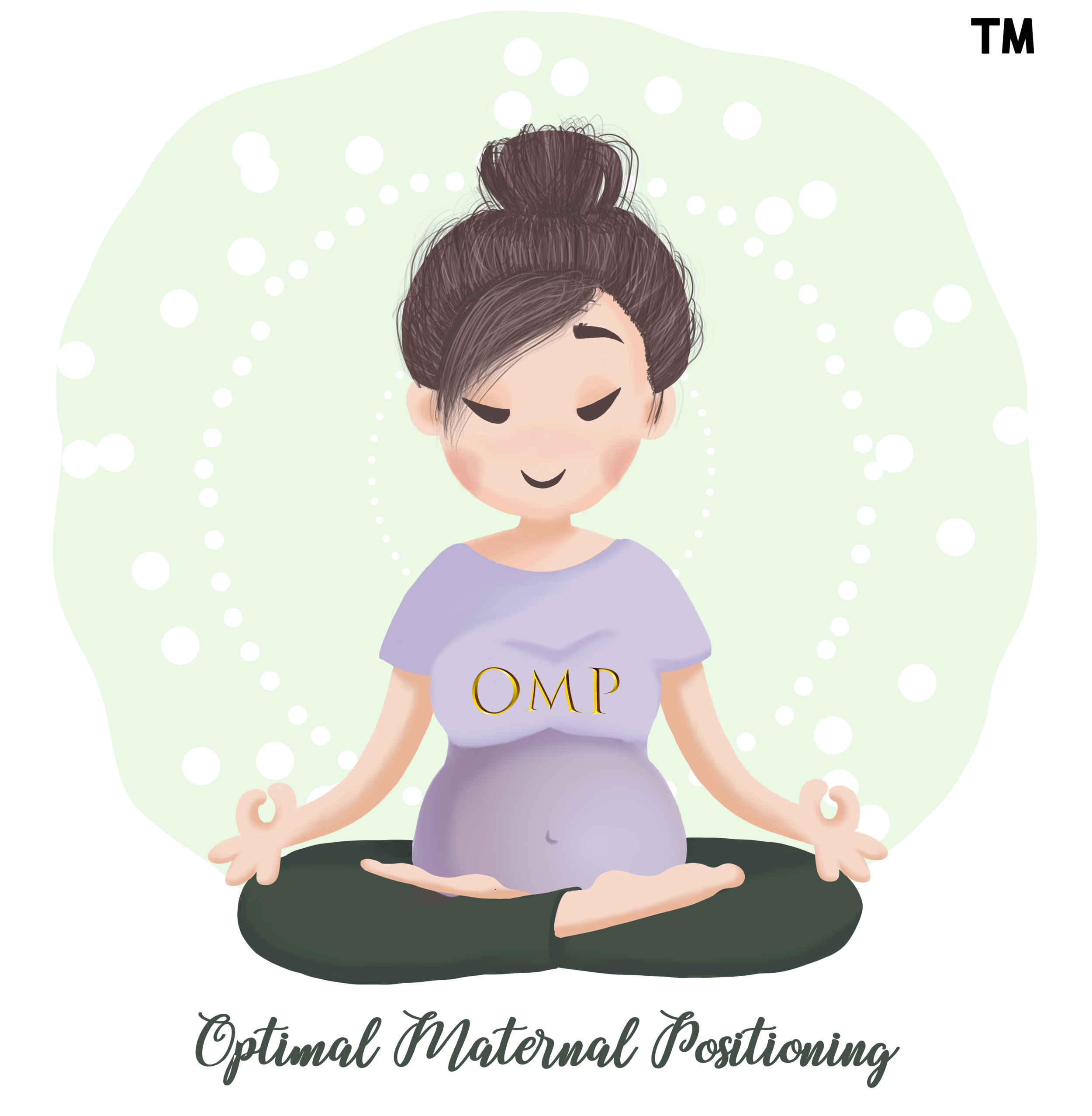HOW DO YOU KNOW YOU ARE IN LABOR?
Recognising what’s normal or abnormal during labor
how do you know you are in labor?
Our nervous system is continuously doing its best to protect us even if it means self-sabotage to keep us safe. All the central nervous system understands is the polarity between “Am I safe or unsafe?” and what keeps us feeling safe or unsafe is our language for safety that we have developed through our growing years.
During pregnancy, labor and birth, our body is continuously communicating with us. The question is “Do we understand what the body is communicating to us?”
During pregnancy, we follow a “no-pain” rule during all the OMP Active Birth Positions, OMP Pelvic Mobility Protocols, OMP Comfort Measures and OMP Reversing Protocols. As long as the pregnant mother is experiencing pain, her body is communicating to her that something within her body is needing attention, like an alarm bell going off.
There has been extensive research done on pain since 1640’s, where the first model of pain was based on the specificity model which modern medicine still utilises. Pain is a nerve stimulus and to lower or eliminate the level of pain one experiences is to block the nerve pathways from communicating with the brain. Since then, extensive research on pain has shown that pain is not purely physical. A lot of pain one experiences is actually emotional.
When women experience contractions, their experiences would vary. Some women would describe contraction pain as menstrual cramps like, some describe it as pain they would never experience before, yet some would describe it as “waves”, “surges” or “intensity”, not associating it with pain at all.
During labor and birth, it is important to understand what is normal versus abnormal so we know when it is safe to stay at home, and when we need the mother to transfer to the hospital regardless of where she had planned to birth her baby.
First question expectant parents tend to ask is “How do I know I am in labor?”
She knows she is in labor when she experience early signs of labor which could be her mucus plug releasing or her waters leaking / breaking. When it comes to early signs of labor, her birth partner may find asking these questions helpful:
What is the …… ?
Color
Texture
Quantity
What is mucus plug? Mucus plug is lodged within the cervix and often dislodges when a woman is in early labor. The color of mucus plug ranges from clear to creamy, and any variations of red ranging from brown, pink to red. Texture of mucus plug is mucousy. Quantity of mucus plug can be as little as a line on the panty to a blob. When the mucus plug releases, usually intermittently, the pregnant mother can go into labor in a few week’s time to 2 weeks later! It’s just an early sign of labor.
If the color is dark red, texture is fresh and bloody, and the quantity makes it look like a crime scene, it could be a sign of placenta abruption where the placenta is detaching before the baby is born. Contact her healthcare provider and/or go to the hospital immediately.
What’s waters leaking or breaking? Waters is the amniotic fluid within the amniotic sac. It is quite common for women to experience a hindwater leak for several days intermittently before contractions actually starts. If the waters were to break, how much time a pregnant woman would have before medical interventions would be dependent on how her healthcare provider practices. This can range from as short as immediately after the waters break to 48 hours later. The color of waters should be clear. Texture is watery and quantity would be dependent if it’s a leak or rupture. When there is a hindwater leak or rupture, it can wash out the mucus plug and/or bloody show meaning the waters are often stained with blood.
If the color is greenish or brownish, it is a sign of meconium staining that is indicative that either the baby is matured or experiencing fetal distress. Contact her healthcare provider and/or go to the hospital immediately.
No matter what early signs of labor she has, she needs contractions for labor to progress. We don’t just want regular contractions, we want contractions with a progressive and/or symmetrical labor patterns.
Progressive labor patterns means that over a period of time, we notice that:
Frequency of the contractions gets closer and closer over a period of time;
Duration of the contractions gets longer and longer over a period of time;
Intensity of the contractions gets more and more intense over a period of time;
Physical signs of Labor: Early signs of labor matched with early labor patterns; active signs of labor ie. more and more bloody show, the urge to have a bowel movement during contractions, purple line, talking anus etc
For a first time mother, we are expecting (1) + (2) + (3) to occur concurrently, matched with the appropriate physical signs of labor. You can have a first time mother experiencing contractions every 8-10minutes apart, about 20-30 seconds long and they are crazy intense. (1) and (2) sounds normal, yet she should not be experiencing such intensity when contractions are still 8-10minutes apart. So the moment one factor is “off”, it can be indicative that something is not right.
For a second time or more mother, we only pay attention to (2) and (3). As soon as the contractions are about 60 seconds long and they are intense, it may not be long before this baby is making its appearance.
A mother’s contraction patterns, her physical signs and how she is coping with labor are all clues as to whether this mother is progressing or not.
If the mother’s labor is progressing, she can choose to still use OMP Pelvic Alignment Protocols as a “maintenance” for just-in-case to ensure that all is going well during labor. She is encouraged to use the OMP Pelvic Mobility Protocols throughout labor.
If a mother’s labor is not progressing and she is experiencing abnormal and/or asymmetrical labor patterns such as:
Fast & Furious Labor Pattern | The moment contractions start, they are coming every 2-5minutes in frequency, they are more than 60 seconds long, and they are very intense. From a pain scale of 0-10, 10 being the most intense - the mother reports feeling as if she started from nothing and escalated to 6-8 on the pain-scale or more.
Start-Stop and/or erratic labor patterns | There is no pattern. When using a contraction timer, you are unable to see a contraction pattern because the frequency varies, the duration varies, and the intensity varies. You are unable to report that contractions are coming every 5 minutes, about 60 seconds long, and relatively intense. They are simply all over the place. The moment she changes position and/or when the sun goes down, everything stops. Sometimes it will seem like there is a pattern, they are coming every 6-8 minutes, they are 40-50 seconds long however they are extremely intense to the point where the laboring mother has hit the wall. So (1) & (2) is symmetrical however (3) is asymmetrical and there are no (4) physical signs to match.
Prodromal Labor | Whilst it seems acceptable that a long early labor can be common for some women, I would still monitor labor patterns and physical signs of early labor to see if the prodomol labor is showing signs of a symmetrical or asymmetrical labor pattern.
Back Labor | At some point during labor, most women would experience back pain together with the contractions as the pelvis opens up to create space for their baby. Back pain is an alarm bell when the intensity of the back discomfort overtakes the intensity of the contractions, and is matched together with either fast & furious labor patterns or haphazard and/or erratic labor patterns, this is when we suspect that the baby is malpositioned or malpresented.
You can have a laboring mother start labor with abnormal labor patterns and progressing to progressive labor patterns when techniques are used to rectify the issues or you can have laboring moms start labor with progressive labor patterns and changing to abnormal labor patterns when they hit a roadblock. The key is to learn how the body is communicating with you to tell you whether labor is progressing or not.
And of course we will encounter non-textbook cases where the labor patterns are not giving you the information you are looking for, which is also why it is very important to watch the body. The physical signs of labor (4) will indicate whether this mother in showing physical signs of early labor or active labor. If she is showing signs of active labor even if the labor patterns don’t match “textbook”, listen to her body!
Having had the opportunity to teach birth professionals - mostly midwives - globally, I discovered that there is generally a consensus when it comes to understanding and teaching how labor starts and early signs of labor, however the lines start blurring when it comes to what needs to happen to enable a mother’s labor to progress to the point when she hits active labor ie. 6cm dilation.
For example, in countries where there is national healthcare, women are not allowed into the hospitals until they are in active or established labor, that being 6cm for first time mothers, and 5cm for second time or more mothers, so if you go into the hospital too early, you will be sent home anyways. It is not uncommon for women with abnormal labor patterns due to suspected malpositioning or malpresentation to experience days of early labor, where upon arrival at the hospital,= are told to go home as they are not acknowledged as “being in labor’. They are often advised that it’s still “too early”, which can be a contributing factor to rates of increased birth trauma after their birth experience.
Imagine if these women were told instead by their healthcare providers “Come into the triage and let us explain to you (1) what is currently happening, (2) what needs to happen before we can admit you into the hospital, (3) what you can do from now till then - rectifying the issues that the body is doing its best to communicate to the laboring mother and her birth team as a “call for help” before the mother eventually qualifies to be admitted into the hospital and wants an epidural upon admission because she is exhausted from days of unproductive labor. What we often hear is that Midwives and/or healthcare providers are challenged in that these women are so drained from days of laboring, they are not as willing to try to use techniques to get labor progressing when they are finally admitted to the labor ward.
Can you imagine what a game changer OMP is going to be in lowering cesarean rates and increasing vaginal deliveries if we all - expectant parents, birth professionals, healthcare providers - simply speak the same language and have the knowledge of the OMP tools to work together in enabling this woman’s labor to progress? This is the mission of sharing Optimal Maternal Positioning. You do not have to be a medical professional to enable labor to progress. Anyone can do this once they have learned it. Optimal Maternal Positioning will bridge the gap to ultimately serve as a modality of empowering women with choice.
Expressing Womanhood
At the end of the day, the mother-to-be wants to walk away from her birth experience knowing that she was loved and respected throughout her entire labor and birth process, AND that she was given the opportunity to try as much as she was willing to try, and be at peace with her labor and birth experience as she births herself into a mother, and enters her new season of womanhood.

